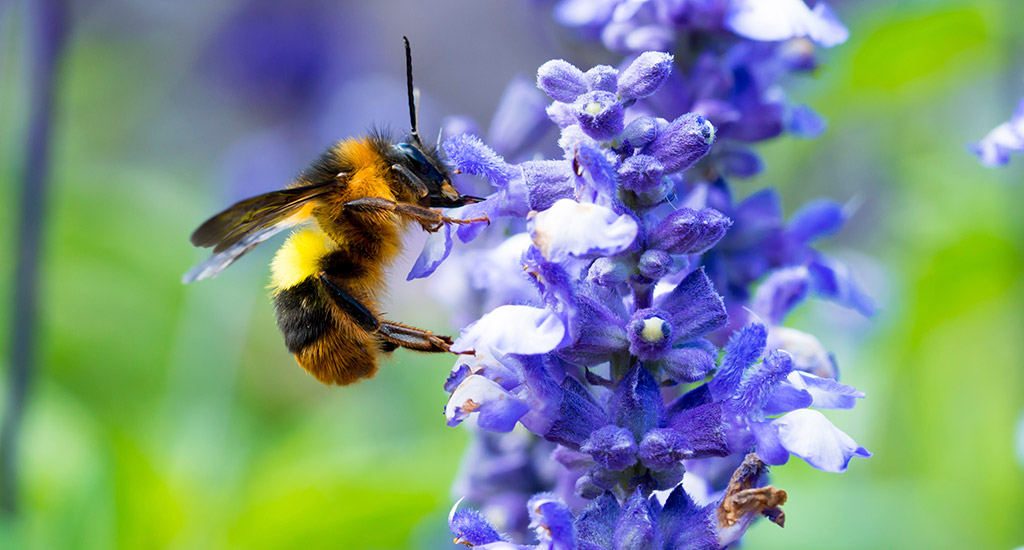Pollinator Habitat

Nectar – Stewardship – Success
Birds, bees, and many other pollinators are in serious decline. Why is this important? Pollinators are an essential part of every ecosystem. They help plants flourish and produce the foods we eat every day. Gardeners everywhere can join forces to create a nectar corridor for pollinators such as bees, butterflies, moths, beetles, bats, hoverflies, and hummingbirds. Help show your appreciation to our little friends but creating a pollinator habitat with the help of Rohsler’s Nursery.
Create your own Pollinator Habitat
The experts at Rohsler’s recommend selecting a variety of plants to ensure extended, successive bloom times in your garden. That not only means consistent food sources for pollinators but also aesthetic benefits for you. Eranthis, Crocuses, and Snowdrops are some of the earliest flowering bulbs along with Hellebores offering available food sources for foraging pollinators. Summer flowering beauties like Coreopsis, Scabiosa, Panicum grass species, and Culver’s Root (Veronicastrum) are favorites for pollinators. Japanese Anemones, Asters, Allium thunbergii “Ozawa,” Joe-Pye Weed, Hardy Ageratum, and Stonecrop are late-season stars.
For the best results in your pollinator habitat, try the following:
- First of all, plant nectar-bearing plants in clumps for maximum impact.
- In the meantime, provide a water source for pollinators.
- Another key component is Milkweed (Asclepias). Include Milkweed, an important link in the life cycle of Monarch butterflies. Rohsler’s grows its own organic, chemical-free Milkweed from seed.
Help the pollinators all year round
Even though most would think that pollinators only appear in the spring and summer, pollinators are around all year round. Your garden continues to host pollinators even during the winter. Several species of butterflies lay their eggs on leaf litter and on host plants. Keep beneficial species’ larva on your property. Each autumn, save some leaves to use in your compost area. When cleaning the garden before winter, cut back plants and leave the cuttings on the ground.
Attracting bees to your garden will help with cross pollination. Looking for their favorite plants? In order to create a perfect pollinator habitat plant plants such as:
| Apple | Grape Hyacinth | Rabbit-Brush |
| Aster | Goldenrod | Redbud Tree |
| Bee Balm | Hazel | Rhododendron |
| Blackberry | Heliotrope | Rosemary |
| Blueberry | Horsemint | Rue |
| Black Locust | Huckleberry | Sage |
| Blue Anise Sage | Joe-Pye Weed | Scorpion-Weed |
| Borage | Lavender | Snowberry |
| Butterfly Bush | Lemon Balm | Strawberry |
| Butterfly Flower | Linden Tree | Sedum |
| Caltrop | Lupine | Summersweet |
| Cascaba | Maple | Sunflower |
| Centaurea | Mint | Thyme |
| Chase Tree | Muskmelon | Tulip Tree |
| Cherry | Onions | Watermelon |
| Chives | Oregano | Whitewood Tree |
| Cosmos | Oregon Grape | Wild Bergamot |
| Creosote Bush | Peach | Wild Buckwheat |
| Currant | Pear | Wild Lilac |
| Elder | Penstemon | Willow |
| Forget-Me-Not | Portulaca | Yellow Locust |
| Fall Sedums | Poplar Tree | Zinnias |
| False Acacia | Pumpkin | |
| Gaillardia | Purple Coneflower |
